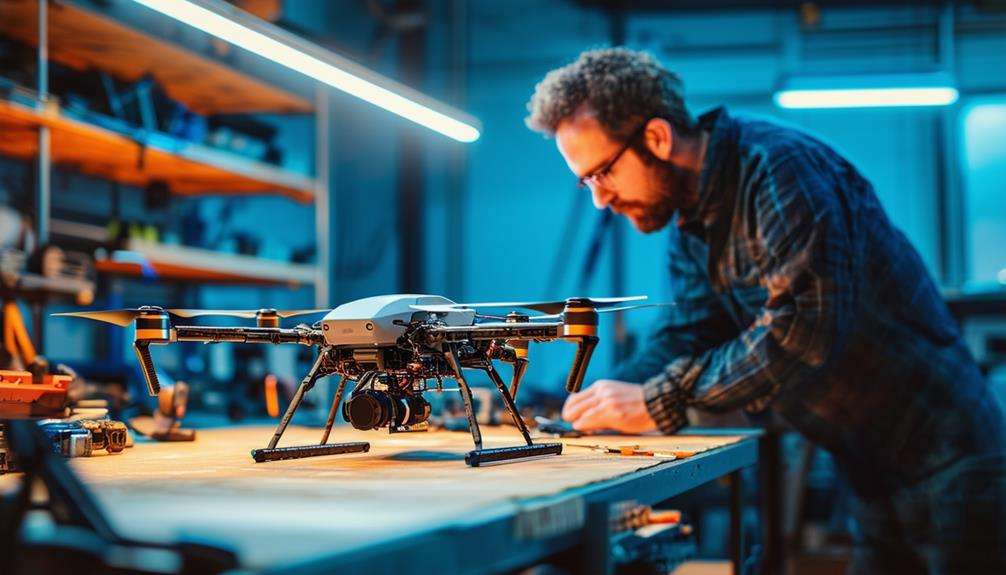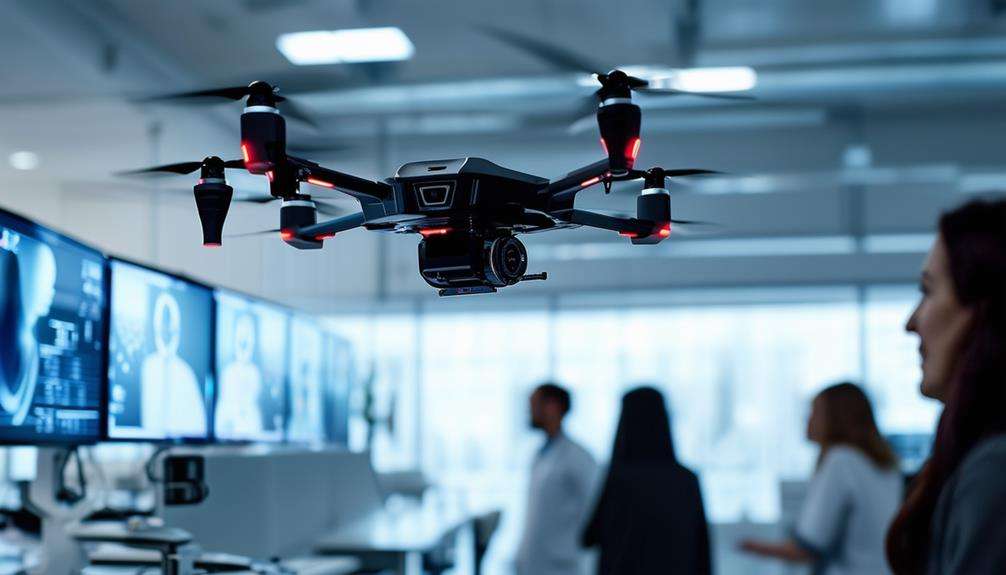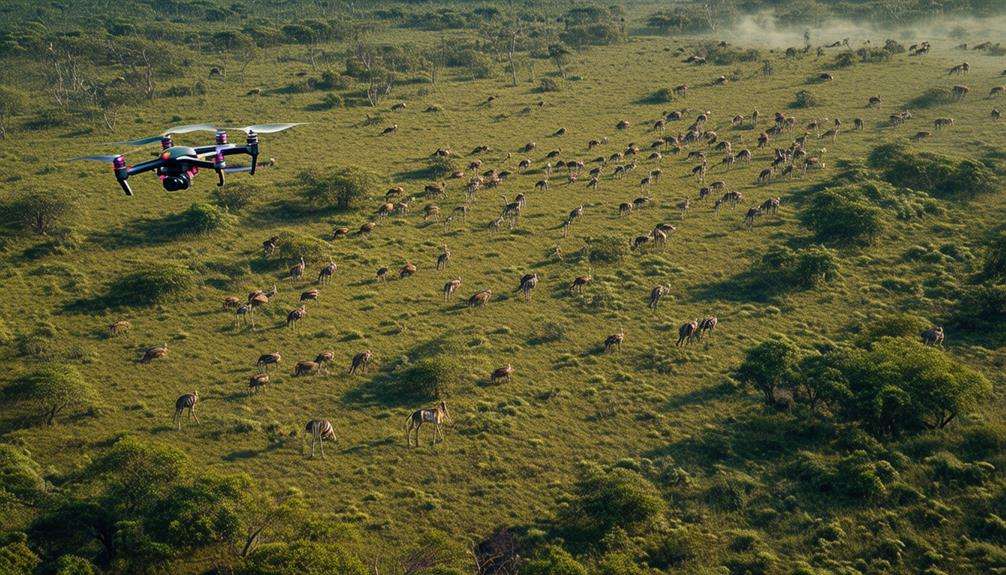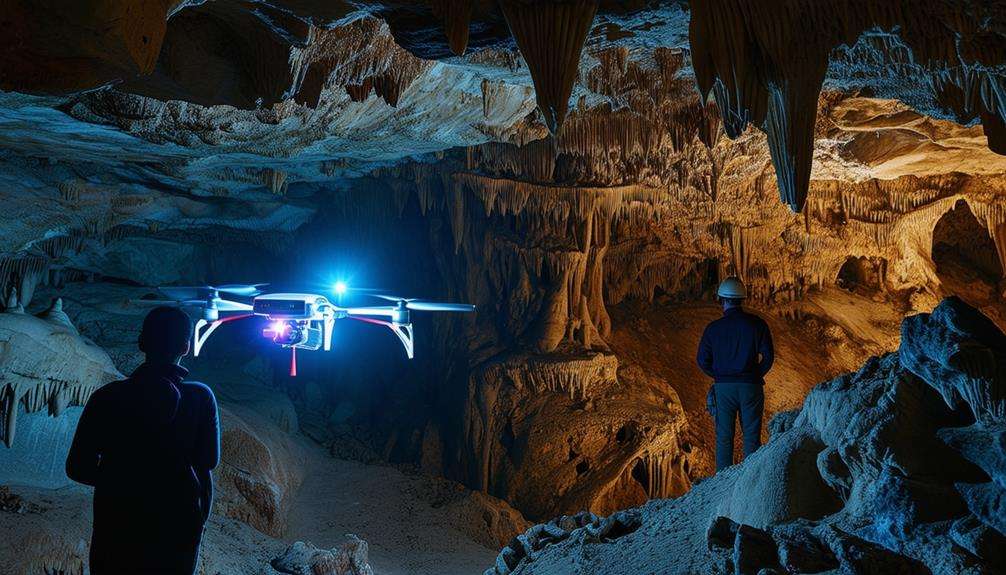Is Drone Delivery Legal in the USA?
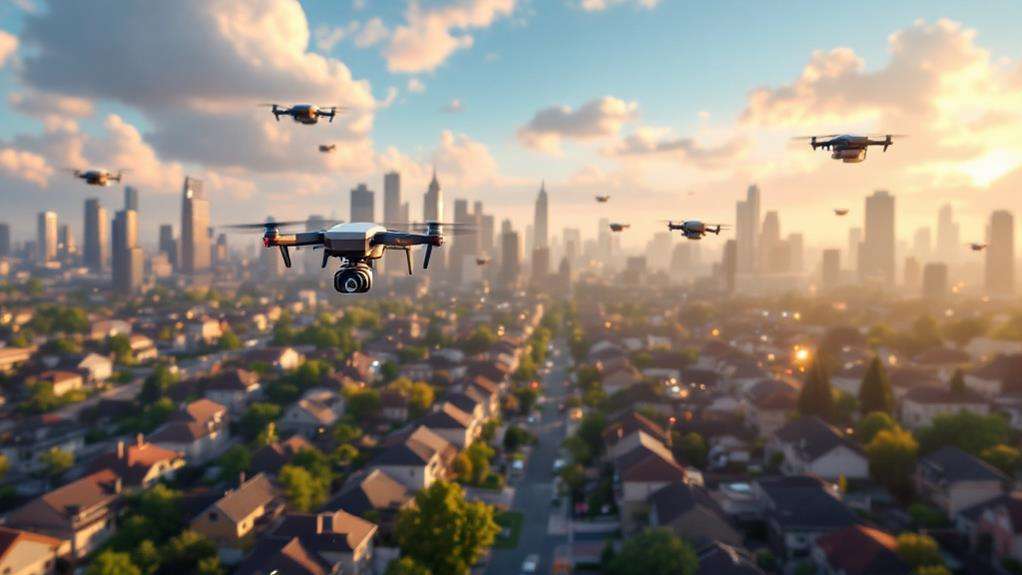
Yes, drone delivery is legal in the USA, but you must comply with a detailed set of rules. The FAA regulates these operations, requiring Part 107 and Part 135 certifications. You'll need to keep drones within visual line of sight, unless you get a Beyond Visual Line of Sight exemption. They can't fly over 400 feet. State and local laws can have additional restrictions, adding complexity. Certain areas like parks or schools may prohibit flights. Major companies like Amazon and UPS are already navigating these rules for their operations. Curious about how this all works? There's much to uncover.
Key Takeaways
- Drone delivery is legal in the USA with compliance to FAA and local regulations.
- Part 135 certification from the FAA is mandatory for commercial drone delivery operations.
- Drones must adhere to visual line of sight rules unless granted a BVLOS exemption.
- Local laws may impose additional restrictions, affecting delivery logistics and operations.
- Compliance with both FAA regulations and state laws is crucial for lawful drone delivery.
Overview of Drone Regulations
When it comes to drone delivery in the USA, understanding the regulatory framework is crucial. The Federal Aviation Administration (FAA) plays a significant role in this landscape, particularly with Part 135 certification, which is essential for commercial operations. If you're considering entering the drone delivery market, obtaining this certification is mandatory. The FAA requires that your drones remain within the visual line of sight during operations, unless you secure a special exemption for Beyond Visual Line of Sight (BVLOS) operations. This is a critical point, as navigating this requirement can significantly impact your delivery strategies and capabilities. Moreover, compliance with specific operational guidelines such as flying below 400 feet is also crucial for lawful drone operations.
As you explore the potential of drone delivery, remember that local laws can further complicate operations. States and localities may impose additional restrictions, like flying near airports or in designated no-fly zones, affecting your delivery logistics. High-profile companies such as UPS and Wing Aviation have successfully navigated these challenges by obtaining the necessary Part 135 certification, showcasing the importance of compliance in achieving successful commercial operations.
Ultimately, understanding and adhering to both federal and local regulations is essential to ensure your drone delivery service operates legally and efficiently within the USA's complex regulatory environment.
FAA's Role and Guidelines
Having looked at the broader regulatory landscape, let's focus on the FAA's role and guidelines in shaping drone delivery operations. The FAA is at the forefront of ensuring safety in U.S. airspace, governing both manned and unmanned aircraft. If you're considering entering the world of commercial drone delivery, you'll need to understand the FAA's requirements thoroughly. To conduct drone delivery operations, companies must secure a Part 135 air carrier certification. This involves a rigorous five-phase process, ensuring that both your drones and pilots meet stringent safety standards. Additionally, the growth in drone delivery services is projected to transform logistics and delivery methods, highlighting their increasing relevance in the commercial sector.
You won't be flying freely once certified, though. The FAA requires operators to obtain specific authorization for each type of drone and operation, tailoring the scope of operations to each unique mission. This ensures that commercial drones operate safely and efficiently within the legal framework. Additionally, the UAS Integration Pilot Program has played a crucial role in testing and refining these regulations, aligning industry goals with public safety.
Navigating FAA guidelines can be complex, especially with the need for individual waivers to address drone-specific challenges. However, understanding these requirements is essential for legal and successful drone delivery operations in the U.S.
State and Local Laws

Navigating state and local laws is a crucial aspect of drone delivery operations in the U.S. You'll find that state laws significantly influence how drones can be used, with each state having its own set of rules regarding drone privacy, safety, and operational guidelines. This creates a varied regulatory landscape, making it challenging for companies to ensure compliance across different jurisdictions. While FAA regulations provide a baseline, they require operators to adhere to local drone rules, complicating things further.
Local governments often impose additional restrictions, like prohibiting drone flights over parks, schools, or near airports. These constraints can limit where and when drone delivery operations can occur, adding another layer of complexity. Some areas may embrace drone technology, while others might impose strict limitations due to safety regulations or privacy concerns.
When considering expanding drone delivery services, it's essential to understand the specific state laws and local ordinances you'll encounter. Variances in these regulations can create barriers to entry, as each jurisdiction may demand different compliance measures. Staying informed about these nuances is vital for successfully navigating the legal landscape and ensuring that your drone operations remain lawful and efficient across the U.S.
Part 107 Certification Requirements
To operate drones commercially in the U.S., you'll need to secure the FAA's Part 107 certification. This certification is crucial for commercial drone operations, including package delivery, ensuring that you meet the necessary safety and operational standards. To obtain Part 107 certification, you must pass a knowledge test that covers a variety of topics such as regulations, airspace classification, weather, and operational procedures.
Once certified, you're allowed to conduct drone operations within specific guidelines. The FAA mandates that your unmanned aircraft must not exceed an altitude of 400 feet. Additionally, you need to maintain a visual line of sight with the drone at all times during operations. This means that for package delivery services, you must always be able to see your commercial drone without the aid of binoculars or other devices.
You also need to register your drone with the FAA, especially if it weighs over 55 pounds, as these require additional scrutiny. Adhering to these Part 107 certification requirements is essential to legally and safely operate your drones commercially in the USA. Without this certification, your drone operations could face legal challenges.
Part 135 Certification Process
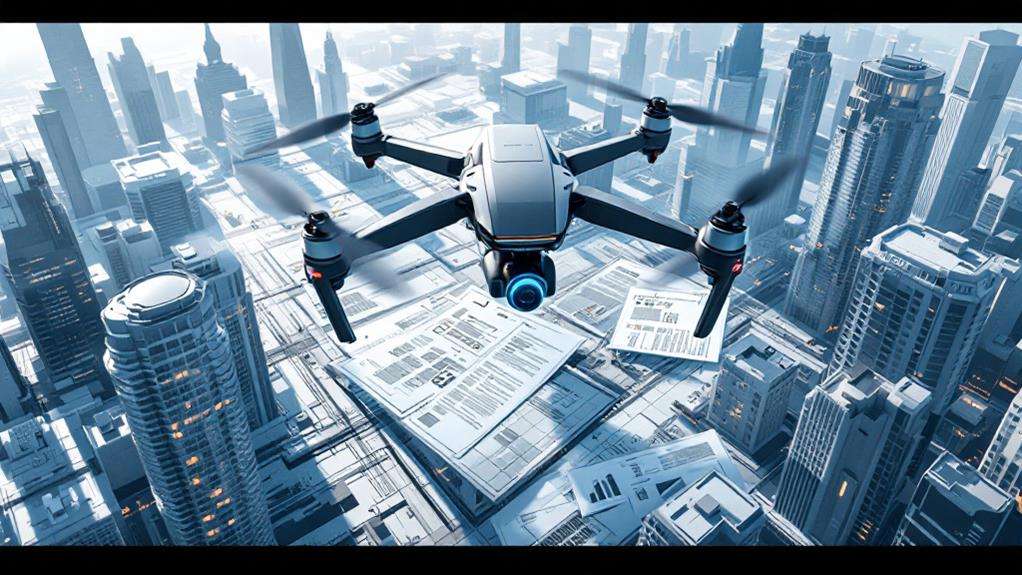
Embarking on the Part 135 certification process for drone delivery is essential if you intend to operate drones for compensation in the U.S. This meticulous certification process ensures that your operations align with the Federal Aviation Administration's (FAA) safety and compliance standards. Part 135 certifications are mandatory for air carriers engaging in commercial drone deliveries. The process involves five phases: pre-application meetings, formal application submissions, design and performance assessments, and administrative functions, culminating in final certification.
You'll encounter four types of Part 135 operating certificates tailored to specific operational scopes: Single-Pilot, Single Pilot in Command, Basic, and Standard. Each type accommodates varying sizes and complexities of drone operations under Part 135. Exemptions are sometimes granted for certain rules not pertinent to drones, allowing you to tailor your compliance strategy to your operational needs.
The benefits of drones in delivery are significant, yet navigating this complex regulatory landscape requires diligence. Notable companies like UPS and Wing Aviation have successfully achieved Part 135 certifications, highlighting the process's intricacies. By following this path, you ensure your drone delivery operations are not only legal but also safe and efficient under federal guidelines.
Key Industry Players
How have companies shaped the drone delivery landscape in the U.S.? They've taken significant steps by obtaining Part 135 air carrier certifications, which enable them to operate legally and expand their services. Wing Aviation was a trailblazer, becoming the first drone delivery company to receive a Part 135 Single Pilot air carrier certificate in April 2019. This achievement set the stage for other players in the market.
UPS Flight Forward followed suit in September 2019, making history as the first operator to conduct package deliveries under Part 135 certification. This move marked a pivotal moment for drone delivery companies. Meanwhile, Amazon, with its long-term vision for drone services, secured its Part 135 certification in August 2020, allowing operation of drones exceeding 55 lbs. Zipline, renowned for its medical supply deliveries, expanded into commercial deliveries with its certification on June 17, 2022.
Here's a quick overview of these key players:
| Company | Key Milestone |
|---|---|
| Wing Aviation | First Part 135 Single Pilot air carrier certificate |
| UPS Flight Forward | First Part 135 package delivery |
| Amazon | Part 135 for drones over 55 lbs |
| Zipline | Part 135 for commercial deliveries |
| Causey Aviation | Standard Part 135 certification in 2023 |
These advancements highlight how drone delivery companies are shaping the industry.
Future of Drone Delivery
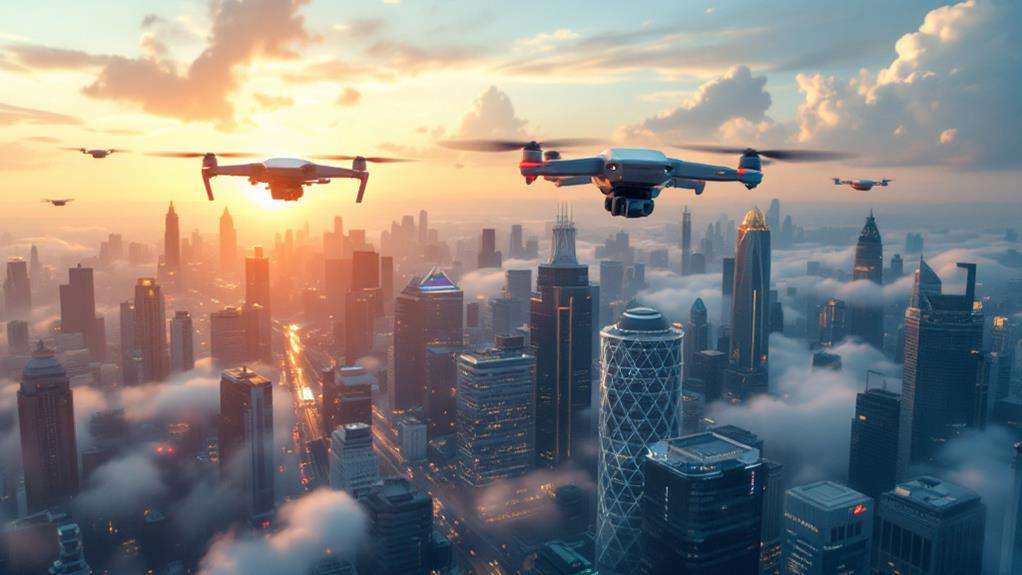
As we look ahead, the future of drone delivery in the USA hinges on evolving regulations and technological advancements. The FAA is actively working to integrate drones into the national airspace system through initiatives like the UAS BEYOND program. This integration means any delivery drones operator must be granted authorization, ensuring safety and efficiency in the skies.
With technology advancing rapidly, drones are seeing improvements in battery life and AI-driven navigation systems, which promise to boost delivery efficiency and broaden operational scope. Major companies like Amazon, UPS, and Walmart are already leading the charge, having received Part 135 certification. They're committed to embedding drone delivery into their logistics networks, foreseeing a significant economic impact.
For consumers, acceptance is rising. Surveys show 80% would choose drone delivery due to its novelty and efficiency. This suggests a strong market potential, with the economic impact being profound. Retailers could see cost savings, especially in last-mile delivery, and the food delivery market is projected to hit $200 billion by 2025. If you're considering the future, it's clear that drones are poised to revolutionize delivery services across the nation.

